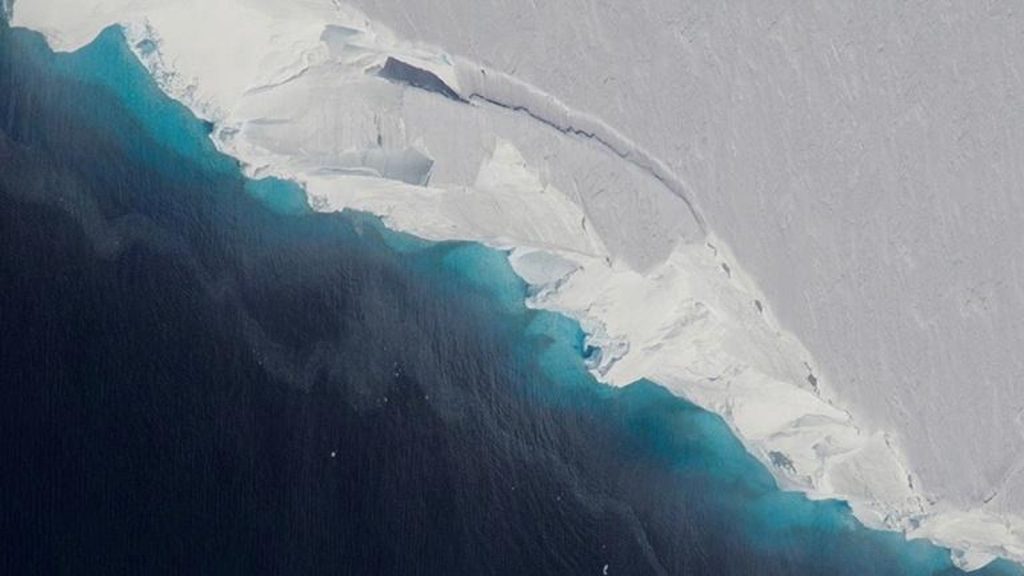Topline
The Thwaites Glacier located in West Antarctica has been dubbed the “Doomsday Glacier” because its collapse could lead to the destruction of the Western Antarctic Ice Sheet—which could lead to devastating high sea levels, according to research from Pennsylvania State University—and scientists now say it’s melting faster than we thought.
Key Facts
The melting glacier already accounts for 10% of global sea level rise, but it’s estimated that once it does collapse, it could cause a 65 centimeter—or a roughly just over two foot—increase in global sea levels over the course of a few years.
In comparison, global sea levels have risen between 21 and 24 centimeters—or between eight and nine inches—since 1880, so a sudden increase in sea level could be especially catastrophic for low-lying and coastal cities like New York City, Miami, Shanghai and Mumbai, forcing some residents to move inland.
The Florida-sized glacier is the world’s widest, and is Antarctica’s most vulnerable glacier mainly because the land it sits on slopes down, allowing warm ocean water to easily wear it down over time.
Scientists previously discovered the glacier started rapidly retreating in the 1940s, most likely due to a strong El Niño event, and the glacier has been unable to recover since, possibly due to the increasing impact of human-caused climate change.
News Peg
The Doomsday Glacier is more exposed to warm ocean water than scientists once believed, according to a new study published Monday in the Proceedings of the National Academy of Sciences. The researchers examined the glacier through radar data from space, and found the salty, warm water is pushing under the glacier and causing “vigorous melting.” As the glacier bobs up and down in the ocean, the warm water rushes up to 3.7 miles underneath it, potentially increasing the area over which the glacier is melting. This new evidence suggests sea levels could rise to a catastrophic level within 10 to 20 years, according to the study. “At the moment we don’t have enough information to say one way or the other how much time there is before the ocean water intrusion is irreversible,” Dr. Christine Dow, a study author and a professor in the Faculty of Environment at the University of Waterloo, said in a statement.
When Will The Doomsday Glacier Collapse?
It’s difficult to predict when exactly the glacier will melt. Scientists a part of the American Geophysical Union predicted in 2021 a key section of the glacier could collapse within the next five years. Others estimate the glacier could collapse within the next 200 to 900 years, according to a study published in Science. Dr. James Kirkham, a glaciologist and chief scientific advisor for the International Cryosphere Climate Initiative, thinks in a worst case scenario, sea levels could rise three feet by 2070, 10 feet by the early 2100s and 50 feet by 2300.
Key Background
Some 900 million people—10% of the world’s population—are at risk of extreme danger from rising sea levels, according to Antionio Guiterres, the secretary-general for the United Nations. Rising sea levels have already impacted coastal and low-lying cities. Around 1,200 residents of the Panaminia island of Garbi Sugdub had to relocate to the mainland in February after the Caribbean Sea overtook the land. The Native American village of Taholah in Washington announced in April plans to relocate a half-mile away to a new location due to rising sea levels from the Pacific Ocean. Rising sea levels could cause around 13 million Americans to relocate inland by 2100, according to a 2020 PLOS One report.
Surprising Fact
The team over Monday’s study also discovered in 2019 Antarctica was melting six times faster than it was in the 1980s.
Read the full article here






